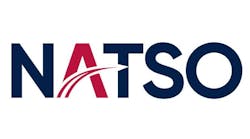The trucking industry has made great strides when it comes to trailer aerodynamics. We are long past the days of asking, “Why should my fleet use trailer aero devices.” We’ve moved to the stage where fleets are trying to determine which devices make the most sense in their operation.
Regulations certainly have played their part in encouraging the use of aerodynamic devices on trailers, and the upcoming Greenhouse Gas Phase 2 regulations will likely give additional impetus for fleets to make investments.
Our recent Confidence Report on Trailer Aerodynamics found that many fleets have already invested in things like trailer skirts as a first step in reducing drag. But there are a host of other options available to deal with drag in three main areas — underbody, gap and rear — where the most gains are possible.
Both the government and perhaps more importantly real-world experience has shown that the maximum aerodynamic improvement comes from a combination of sealing the tractor/trailer gap, managing air in or around the trailer underbody and adding a rear device like a boat tail. This allows you to act on all three of the key areas associated with drag.
No matter where you are in your trailer aerodynamic evolution you’ll want to prioritize the devices that give you the best return on investment and start installing them on your trailers. But remember you need to continuously re-evaluate aerodynamic technology because what you purchase today has a great deal of influence on which additional devices you should choose going forward.
We talked to a lot of people in gathering information for this, our latest, Confidence Report, and we spent some time talking about methods used for testing aerodynamic technology. We’ve come away with a high confidence that the products currently on the market provide benefits beyond just saving fuel. They also play a role in improving vehicle stability, reducing splash and spray and even reducing driver fatigue.
Sure there are some downsides mostly in the area of added weight and variance in information from device manufacturers, but investing in aerodynamic devices on your trailer can save you between 1% and 10% depending on the technology selected. And that certainly makes them worth considering.


